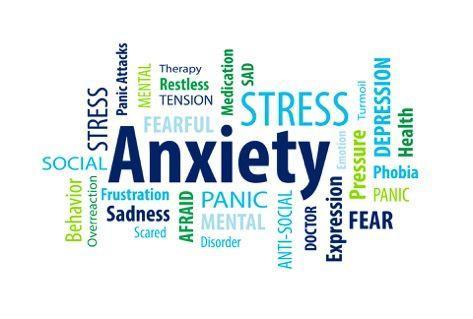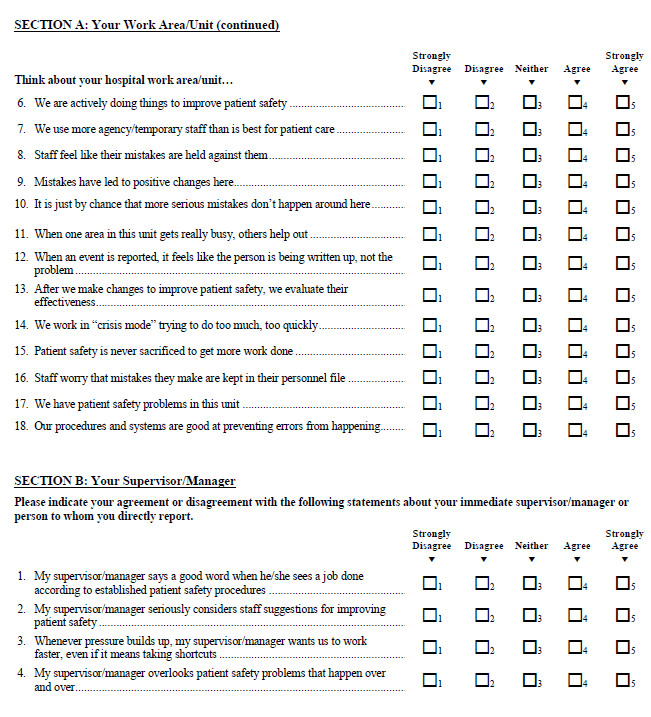
What is the network of patient safety databases?
What is the Network of Patient Safety Databases? Learn about the NPSD background and mission. How Does the NPSD Work? See how patient safety information is collected and shared. What is Our Role in Quality & Patient Safety? NPSD aggregates non-identifiable patient safety data at the national level.
What is the difference between patient safety event reporting and incident reporting?
Patient safety event reporting systems are ubiquitous in hospitals and are a mainstay of efforts to detect patient safety events and quality problems. Incident reporting is frequently used as a general term for all voluntary patient safety event reporting systems, which rely on those involved in events to provide detailed information.
Can health care providers aggregate patient safety event data?
However, health care providers and PSOs may aggregate patient safety event information on a voluntary basis, and AHRQ will establish a network of patient safety databases that can receive and aggregate nonidentifiable data that are submitted voluntarily.
Why do we track patient safety concerns?
This rich data source makes it possible to identify and track patient safety concerns for the purpose of learning how to mitigate patient safety risks and reduce harm across healthcare settings nationally.

What are patient safety reports?
The Patient Safety Reporting System (PSRS) is a non-punitive, confidential, and voluntary program which collects and analyzes safety reports submitted by healthcare personnel. Staff can report close calls, suggestions, and incident / event related information and data to improve patient safety.
What is a patient safety dashboard?
The Patient Safety Dashboard will give clinicians information in real-time on relevant safety categories such as hospital-acquired infections and blood clots, and will also provide clinical decision support for items that require a certain action.
What are patient databases?
Primary clinical databases usually include the patients' medical records (PMRs), as well as any separate repositories of data collected in medical offices, outpatient clinics, and hospitals. Patient record databases may contain data collected over long periods of time, sometimes for a patient's life-time.
What kind of data should be including in a hospital database?
These data sets provide information on:Patient demographics.Diagnoses.Procedures.Admission source.Discharge status.Length of stay.Charges.
What is a safety and quality dashboard in healthcare?
Dashboards are a type of health information technology (HIT) that use data visualization techniques to support clinicians and managers in viewing and exploring data on processes and outcomes of care1.
What is a quality dashboard?
Quality Dashboards (QD) is a condition-specific, actionable web-based application for quality reporting and population management that is integrated into the Electronic Health Record (EHR).
What is the most commonly used database in healthcare?
Relational Databases Mon states that the most common form of database used in healthcare is the relational database.
What are two types of database?
Databases typically have one of two basic forms: single-file or flat file database. multi-file relational or structured database.
What is the purpose of a database in healthcare?
Collecting and storing patient health information in electronic databases enables clinicians to keep track of patients' conditions over time. Information can quickly be accessed anywhere at any time, and all the relevant information is kept in one place.
What are the 4 major categories of data found in health organizations?
Claims data falls into four general categories: inpatient, outpatient, pharmacy, and enrollment.
What information is collected in healthcare databases?
Databases in healthcare collect information about healthcare operations. Every piece of data a medical practitioner collects from a patient—including medications, prescriptions, procedures, operations data, and registries like encounter and discharge forms—is logged in a healthcare database.
What are some examples of healthcare data sets?
10 Great Healthcare Data SetsBig Cities Health Inventory Data. ... Healthcare Cost and Utilization Project (HCUP) ... data.gov. ... Kent Ridge Bio-medical Dataset. ... HealthData.gov. ... MHEALTH Dataset Data Set. ... Surveillance, Epidemiology & End Results (SEER)-Medicare Health Outcomes Survey (MHOS) ... The Human Mortality Database (HMD)More items...•
What are examples of metrics which are tracked on the quality of care dashboard?
What metrics should you include on a healthcare quality management dashboard?Mortality. The patient mortality rate measures the percentage of patients who die in a hospital's care before being discharged. ... Safety of care (medical incidents) ... Hospital readmission rate. ... Patient experience. ... Timeliness and effectiveness of care.
How are healthcare KPIS measured?
The KPI can be either measured in terms of an individual treatment fee or in the form of an average treatment fee taken from all the patients during a certain amount of time. The average treatment charge is a good measure of business objectives relating to reducing hospital costs.
What is patient safety?
Patient Safety is a health care discipline that emerged with the evolving complexity in health care systems and the resulting rise of patient harm in health care facilities. It aims to prevent and reduce risks, errors and harm that occur to patients during provision of health care.
What is the WHO patient safety and risk management unit?
The Patient Safety and Risk Management unit at WHO has been instrumental in advancing and shaping the patient safety agenda globally by focusing on driving improvements in some key strategic areas through:
Why does patient harm occur?
For example, a patient in hospital might receive a wrong medication because of a mix-up that occurs due to similar packaging. In this case, the prescription passes through different levels of care starting with the doctor in the ward, then to the pharmacy for dispensing and finally to the nurse who administers the wrong medication to the patient. Had there been safe guarding processes in place at the different levels, this error could have been quickly identified and corrected. In this situation, a lack of standard procedures for storage of medications that look alike, poor communication between the different providers, lack of verification before medication administration and lack of involvement of patients in their own care might all be underlying factors that led to the occurrence of errors. Traditionally, the individual provider who actively made the mistake (active error) would take the blame for such an incident occurring and might also be punished as a result. Unfortunately, this does not consider the factors in the system previously described that led to the occurrence of error (latent errors). It is when multiple latent errors align that an active error reaches the patient.
How many patients are harmed in primary care?
Globally, as many as 4 in 10 patients are harmed in primary and outpatient health care. Up to 80% of harm is preventable. The most detrimental errors are related to diagnosis, prescription and the use of medicines (6).
How many people are harmed in hospitals?
In high-income countries, it is estimated that one in every 10 patients is harmed while receiving hospital care (2). The harm can be caused by a range of adverse events, with nearly 50% of them being preventable (3).
Why is patient safety important?
Patient safety is fundamental to delivering quality essential health services. Indeed, there is a clear consensus that quality health services across the world should be effective, safe and people-centred. In addition, to realize the benefits of quality health care, health services must be timely, equitable, integrated and efficient.
When did WHO start working on patient safety?
WHO's work on patient safety began with the launch of the World Alliance for Patient Safety in 2004 and this work has continued to evolve over time. WHO has facilitated improvements in the safety of health care within Member States through establishment of Global Patient Safety Challenges.
What is patient safety event reporting?
Patient safety event reporting systems are ubiquito us in hospitals and are a mainstay of efforts to detect patient safety events and quality problems. Incident reporting is frequently used as a general term for all voluntary patient safety event reporting systems, which rely on those involved in events to provide detailed information. Initial reports often come from the frontline personnel directly involved in an event or the actions leading up to it (e.g., the nurse, pharmacist, or physician caring for a patient when a medication error occurred), rather than management or patient safety professionals. Voluntary event reporting is therefore a passive form of surveillance for near misses or unsafe conditions, in contrast to more active methods of surveillance such as direct observation of providers or chart review using trigger tools. The Patient Safety Primer Detection of Safety Hazards provides a detailed discussion of other methods of identifying errors and latent safety problems.
What is the Patient Safety and Quality Improvement Act?
The legislation provides confidentiality and privilege protections for patient safety information when health care providers work with new expert entities known as Patient Safety Organizations (PSOs). Health care providers may choose to work with a PSO and specify the scope and volume of patient safety information to share with a PSO. Because health care providers can set limits on the ability of PSOs to use and share their information, this system does not follow the pattern of traditional voluntary reporting systems. However, health care providers and PSOs may aggregate patient safety event information on a voluntary basis, and AHRQ will establish a network of patient safety databases that can receive and aggregate nonidentifiable data that are submitted voluntarily. AHRQ has also developed Common Formats —standardized definitions and reporting formats for patient safety events—in order to facilitate aggregation of patient safety information. Since their initial release in 2009, the Common Formats have been updated and expanded to cover a broad range of safety events.
What is AHRQ common format?
AHRQ has also developed Common Formats —standardized definitions and reporting formats for patient safety events— in order to facilitate aggregation of patient safety information. Since their initial release in 2009, the Common Formats have been updated and expanded to cover a broad range of safety events.
How is event reporting used in health care?
A 2016 article contrasted event reporting in health care with event reporting in other high-risk industries (such as aviation), pointing out that event reporting systems in health care have placed too much emphasis on collecting reports instead of learning from the events that have been reported. Event reporting systems are best used as a way of identifying issues that require further, more detailed investigation. While event reporting utilization can be a marker of a positive safety culture within an organization, organizations should resist the temptation to encourage event reporting without a concrete plan for following up on reported events. A PSNet perspective described a framework for incorporating voluntary event reports into a cohesive plan for improving safety. The framework emphasizes analysis of the events and documenting process improvements arising from event analysis, rather than encouraging event reporting for its own sake.
What is PSNet perspective?
A PSNet perspective described a framework for incorporating voluntary event reports into a cohesive plan for improving safety. The framework emphasizes analysis of the events and documenting process improvements arising from event analysis, rather than encouraging event reporting for its own sake.
Why are event reports limited?
The spectrum of reported events is limited, in part due to the fact that physicians generally do not utilize voluntary event reporting systems.
What are the most frequently reported events in a hospital?
Studies of electronic hospital event reporting systems generally show that medication errors and patient falls are among the most frequently reported events.

Background
Characteristics of Incident Reporting Systems
- An effective event reporting system should have four key attributes: While traditional event reporting systems have been paper based, technological enhancements have allowed the development of Web-based systems and systems that can receive information from electronic medical records. Specialized systems have also been developed for specific settings, such as th…
Limitations of Event Reporting
- The limitations of voluntary event reporting systems have been well documented. Event reports are subject to selection bias due to their voluntary nature. Compared with medical record review and direct observation, event reports capture only a fraction of events and may not reliably identify serious events. The spectrum of reported events is limited, in part due to the fact that ph…
Using Event Reports to Improve Safety
- A 2016 article contrasted event reporting in health care with event reporting in other high-risk industries (such as aviation), pointing out that event reporting systems in health care have placed too much emphasis on collecting reports instead of learning from the events that have been reported. Event reporting systems are best used as a way of identifying issues that require furth…
Current Context
- At the national level, regulations implementing the Patient Safety and Quality Improvement Act became effective on January 19, 2009. The legislation provides confidentiality and privilege protections for patient safety information when health care providers work with new expert entities known as Patient Safety Organizations (PSOs). Health care providers may choose to wo…